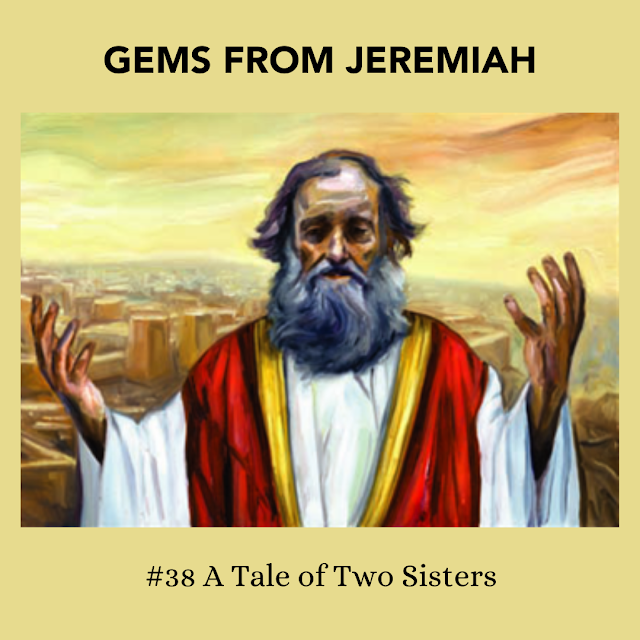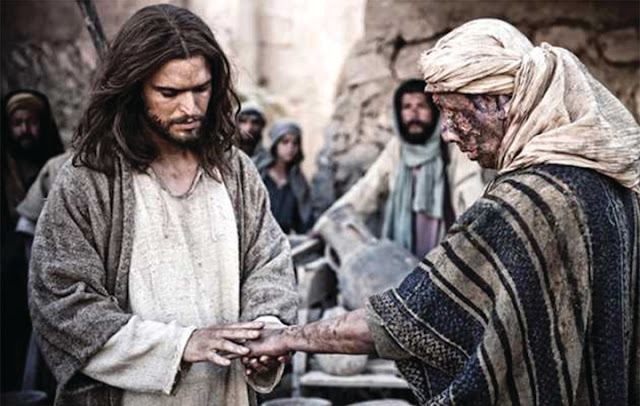Mark's Gospel as Sequel: Understanding the Backstory, part V: Jeremiah
To fully
understand Mark’s “sequel” to the Scriptures of Israel, we need to look at 7
previous “episodes”, 7 OT characters who shed light on what Mark is saying
about John the Baptist and Jesus in chapter 1.
The fifth character from the “original story” is Jeremiah.
As we saw
last time, Jesus’ message concerned the “kingdom of God” (Mk. 1.15). In the Psalms, Yahweh is described as King of
the world (Pss. 47, 93-99, etc.).
Yahweh, the King of the world, ruled the nations through his “son”
enthroned in Zion (Ps. 2.6). The dream
of the Hebrew Scriptures is for Yahweh to establish his reign (kingdom) over
the whole world, through his son/viceroy, the King of Israel – one world, one
God. The realization of this dream was guaranteed
by the Davidic covenant recorded in 2 Sam. 7 – Yahweh’s promise that there
would always be a descendant of David on the throne of Jerusalem. However, at the time of Jesus, there was no one
from David’s line ruling over Israel.
Herod the Great, who ruled Judea for Rome at the time of Jesus’ birth, had
taken the title “King of the Jews”, despite his not being a descendant of David,
let alone Jewish. One way that Herod had
attempted to legitimate his claim to the throne of Jerusalem was to undertake an
immense project of enlarging/renovating the Temple (cf. Jn. 2.20) which had initially
been rebuilt following the return from Babylon of a small minority of the exiles
(cf. Ezra, Haggai), thus attaching his name to the Jerusalem shrine in the historical
record. Herod’s son, (Herod) Antipas,
who ruled Galilee during Jesus’ lifetime, enjoyed much less prestige than his
father, and shared a portion of his father’s former kingdom with some of his
brothers (cf. Lk. 3.1). Indeed, the last
Davidic king – Zedekiah – had been deposed by the Babylonians some 6 centuries
before Jesus. Despite the ill-fated Hasmonean
dynasty (ended by Rome in 63 B.C.) that had been established following the successful
Maccabean Revolt against the Seleucids in the second century B.C. (=origins of Hannukah),
the Davidic dynasty was never believed to have been properly restored.
As Elijah
had attempted to call the Kingdom of Israel back to Yahweh in advance of the
Assyrian invasion and destruction of Samaria in 722 B.C., so another prophetic
figure – Jeremiah – had undertaken a 40-year-long “career” of warning the
Southern Kingdom of Judah of impending disaster at the hands of the Babylonian
empire – disaster which struck with terrible finality in the year 587, when
Jerusalem and Solomon’s Temple were both destroyed and the people exiled to
Babylon for 70 years, as Jeremiah had predicted. Mark’s description of the people who went to
be baptized by John in the Jordan River is intriguing – “people from the whole Judean
countryside and all the people of Jerusalem” (Mk. 1.5). This echoes a frequent refrain in the book of
Jeremiah (and that of Zechariah): the “people of Judah and the inhabitants of
Jerusalem” (cf. Jer. 4.3-5, passim) were Jeremiah’s target audience during
the lifespan of a generation (i.e., 40 years).
As Elijah
and Jeremiah had warned the people of God of impending disaster and called them
to “return” to faithful obedience to the covenant, so John calls Israel to “a baptism
of repentance for the forgiveness of sins” (Mk. 1.4) and baptizes (“anoints”)
the “son of David/God”, designating Jesus as Yahweh’s “son/servant” who will
reign over the nations (Ps. 2.7; Is. 42.1; cf. Mk. 1.11).
There is an
interesting parallel between the Gospel of Mark and the Books of 1-2 Kings (one
book in the Hebrew Scriptures, i.e., “Tanakh”).
Kings opens with the original “son of David” (Solomon)
building/dedicating the Jerusalem Temple and ends with the Temple’s destruction
by the Babylonians (as Jeremiah had predicted for 40 years). The Gospel of Mark begins with the baptism of
the ultimate Son of David and ends with Israel’s king experiencing the fate he
had predicted would befall Jerusalem and Herod’s Temple within one generation (cf.
Mk. 13).




Comments
Post a Comment